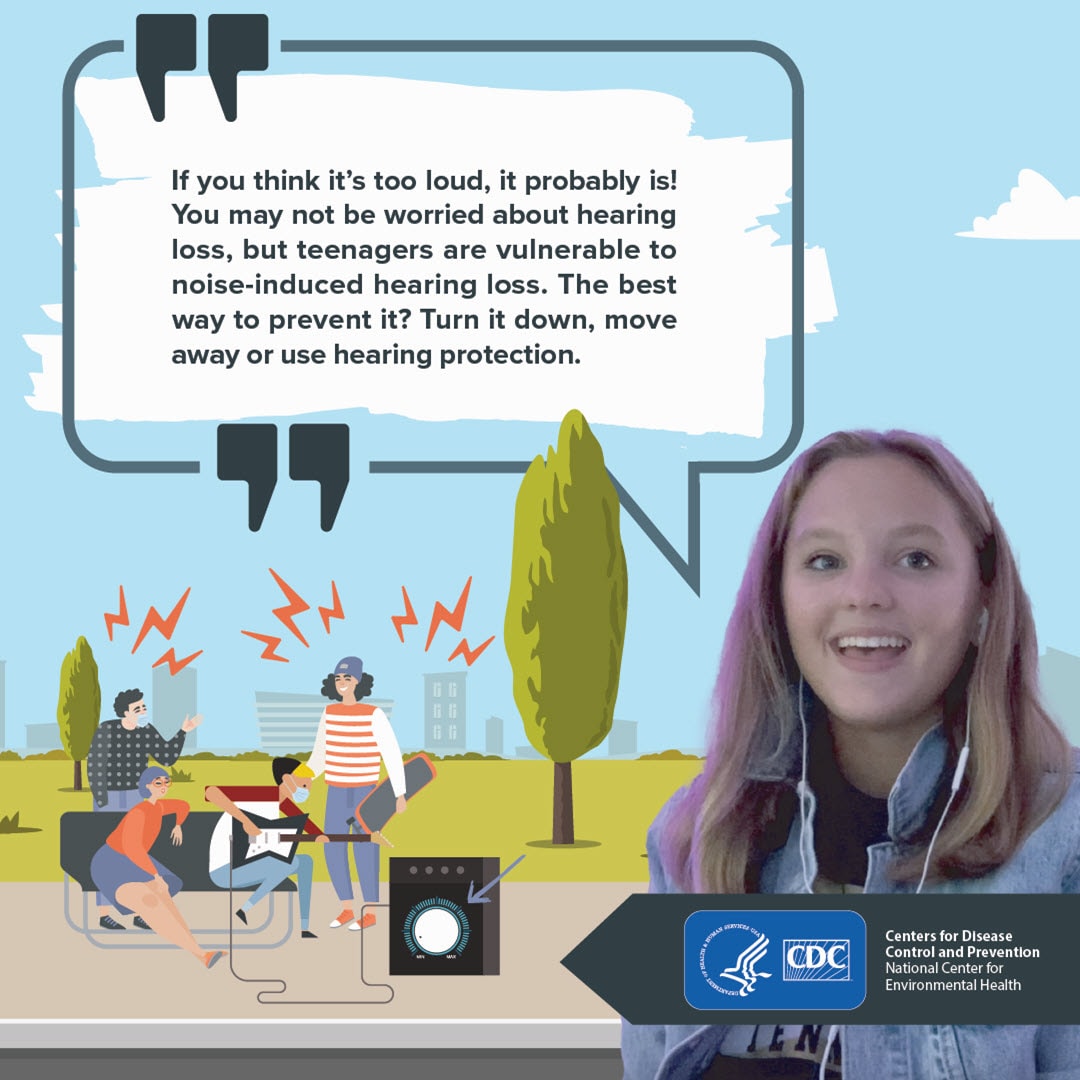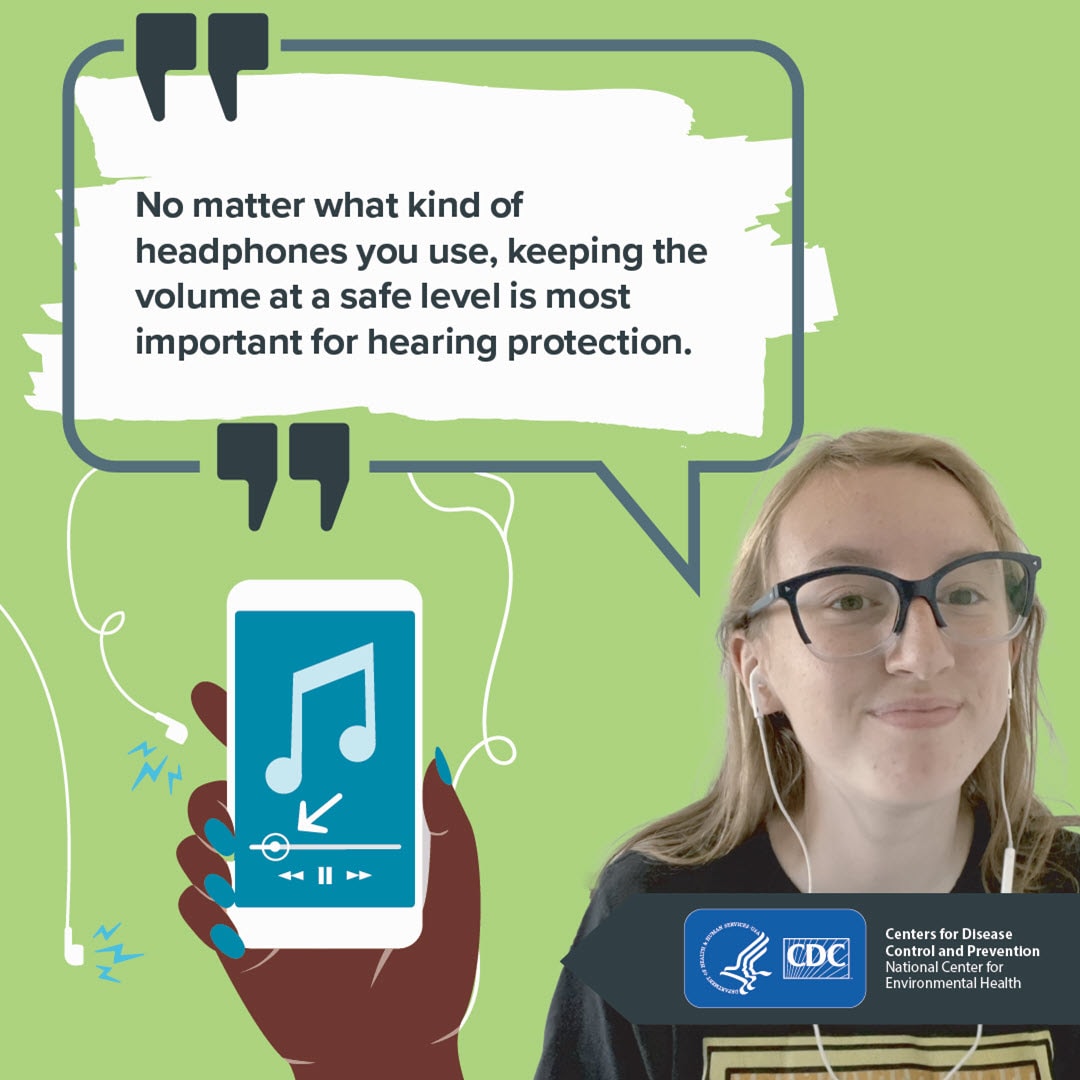October is National Protect Your Hearing Month
Check Out CDC’s Video Series on Hearing Protection for Teens.

Dear Partners,
To help teenagers learn more about Noise-Induced Hearing Loss, how to protect their hearing, and overcome the stigma of using hearing protection, CDC has developed a series of resources for teens, including videos, social media graphics, posters, and additional resources.
Included in these resources is a video series that follow three teens, Catherine, Savannah, and Ainsley, each speaking to a different theme:
- Video 1: Social Consequences of Hearing Protection. Catherine talks about how using hearing protection may not sound cool, but losing your hearing isn’t cool either. If your friends ask why you’re wearing them, start a conversation about why it’s cool to protect your hearing. Prevent hearing loss and remove the stigma around hearing protection.
- Video 2: Who, What, When, Where and Why of Hearing Protection. Savannah talks about how everyone, including teenagers, should try to reduce loud noises around them. Turn down the volume or move away from loud noises or music when you can. When you can’t, wear hearing protection like earplugs or noise-cancelling headphones at concerts, sporting events, dance, and exercise classes, and even while mowing the lawn.
- Video 3: Listen Better: How to Protect Your Ears When Listening Through Headphones. Ainsley talks about how no matter what kind of headphones you use, keeping the volume at a safe level is most important for hearing protection. You can safely listen at 80% of volume for 90 minutes a day. If you raise the volume of your headphones to drown out noise around you, like the sound of the lawn mower while you mow the grass, your volume is too loud.
Parents of teens, healthcare professionals, teachers, school administrators, and others who work closely with teenagers can share these resources to help reinforce their importance. Teens can also share them along with their own stories on Instagram, Twitter, Facebook, and Snapchat.
Find these videos, along with social media images and messages, posters, and additional resources, at https://bit.ly/3EYoUJfexternal icon .
Thank you for your help in sharing these resources with your networks. You can find sample newsletter text below. Low-resolution images of the posters are included in case you would like to include them in your newsletters. Please let us know if you would like higher-resolution versions of the files to share.
Sincerely,
CDC’s National Center for Environmental Health’s Noise-Induced Hearing Loss Program
Sample newsletter text:
CDC has developed a series of resources for teens, including videos, social media graphics, and posters available on its new webpage for Teens on Noise-Induced Hearing Loss. These resources can help teens learn how to protect their hearing and plan for noisy environments. Parents of teens, healthcare professional, educators, school administrators, and others who work closely with teenagers can share these resources to help reinforce their importance.
Find first-person videos of teens, social media images and messages, posters, and additional resources, at https://bit.ly/3EYoUJfexternal icon.


